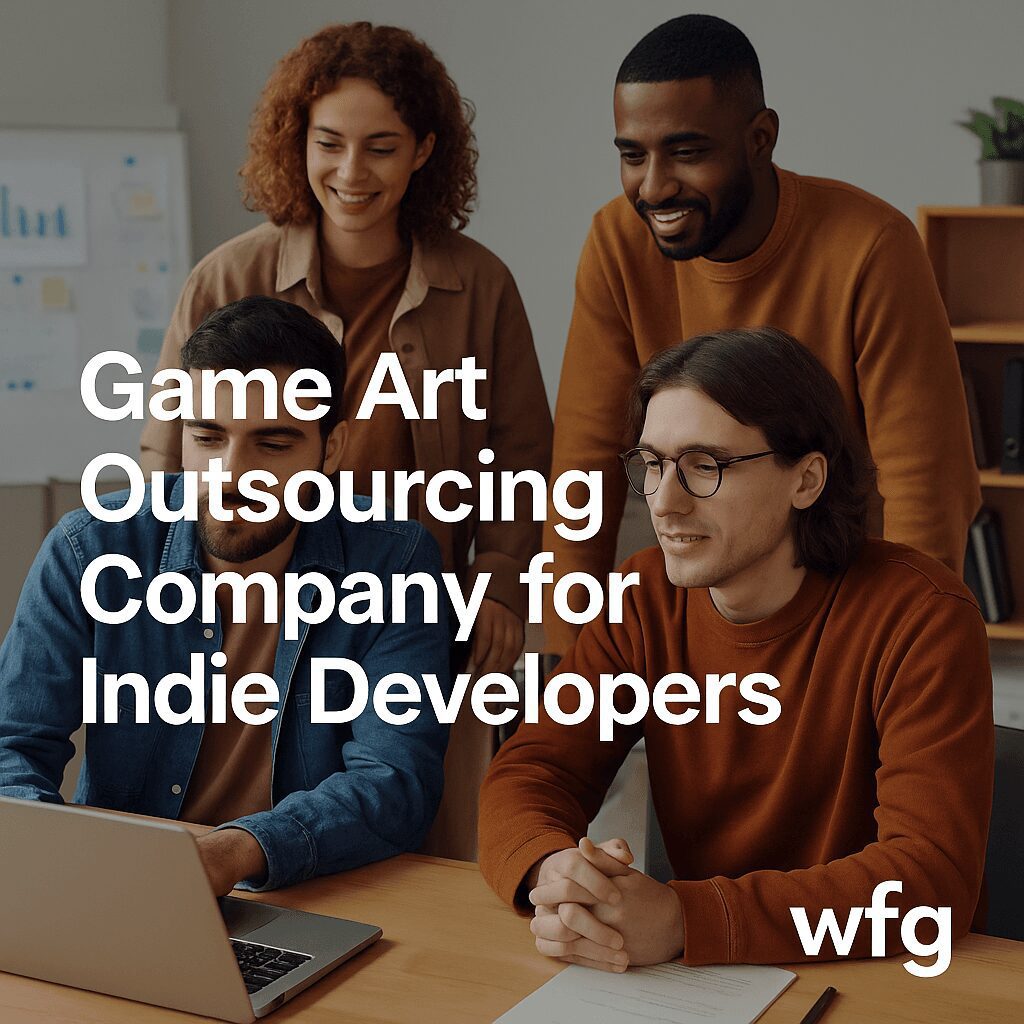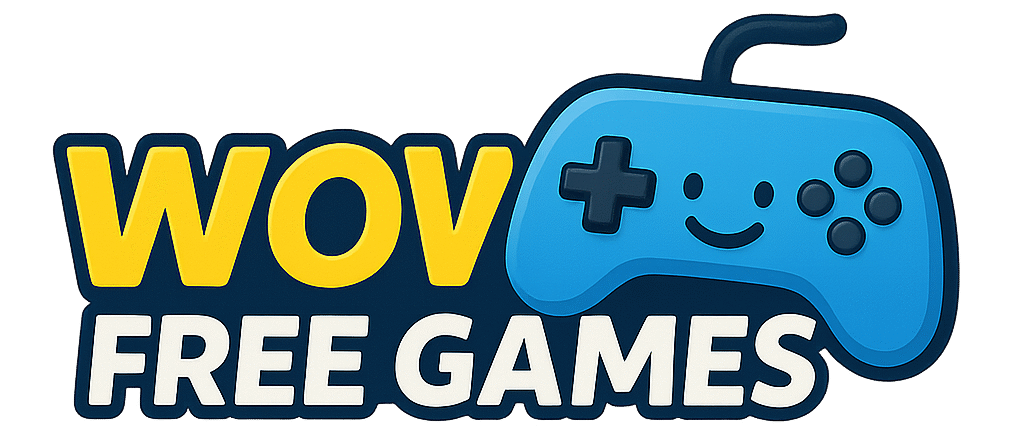Every indie developer has faced the same frustrating crossroad: you’ve built the gameplay mechanics, your prototype feels exciting, but the art assets are lagging behind. Hiring a full-time artist isn’t always possible—budgets are tight, timelines are short, and you might not need a full team for the entire project.

That’s where a game art outsourcing company steps in. For indie developers, outsourcing can be the difference between a project that stalls and one that launches with professional-quality visuals. But with so many studios claiming to be the “best,” how do you know which partner fits your project?
This guide breaks it all down—what outsourcing companies actually offer, why indie teams lean on them, how to evaluate providers, pitfalls to avoid, and why a company like wfg could be the right fit for your next game.
Why Indie Developers Consider a Game Art Outsourcing Company
Unlike AAA studios with departments dedicated to concept art, modeling, animation, and UI, indie teams are usually small. Some are just one developer handling code, design, and production all at once. For these creators, outsourcing fills critical gaps.
Read also : Passive income for gamers.
Here are the main reasons indie developers turn to outsourcing companies:
- Budget constraints – Indie studios rarely have the funds to hire permanent staff. Outsourcing lets them pay only for the art they need.
- Specialized skill sets – Maybe you need a hand-painted art style, stylized characters, or photorealistic 3D assets. Outsourcing connects you with specialists you wouldn’t easily find in-house.
- Deadline pressure – Kickstarter backers, Steam early access deadlines, or mobile launch windows don’t wait. Outsourcing accelerates production.
- Flexibility – One month you might need character designs, the next only a UI overhaul. Outsourcing scales with your needs.
Key Services a Game Art Outsourcing Company Offers Indie Teams
A good outsourcing company doesn’t just hand you generic assets. They provide a structured pipeline of services that cover every stage of game development.
- 2D Concept Art & Illustrations
Early sketches, character designs, storyboards, and environment concepts that set the tone for your game. - 3D Modeling & Texturing
Creating game-ready assets like characters, props, and environments optimized for your engine. - Animation & VFX
Breathing life into your assets with rigging, character animation, particle effects, and cinematic cutscenes. - UI/UX Design
Menus, HUDs, and onboarding flows designed for usability and style consistency.
For indie devs, the right partner feels like a virtual extension of your team, filling in whichever art roles you can’t staff internally.
Benefits of Outsourcing Game Art as an Indie Developer
Outsourcing isn’t just about saving money—it’s about maximizing creative freedom while keeping projects on track. Here’s why it makes sense:
- Cost Efficiency – A single senior artist hired full-time might cost more than contracting an entire outsourcing team for a few months.
- Talent Access – You gain exposure to artists who have worked on dozens of games across multiple genres. Their expertise can elevate your game far beyond your personal limitations.
- Creative Diversity – You’re not locked into one art style. Need pixel art today and stylized 3D tomorrow? Outsourcing companies offer both.
- Time Savings – While you focus on coding, testing, or pitching investors, the art pipeline keeps moving forward.
- Scalability – If your game suddenly gains traction, you can quickly ramp up asset production without lengthy hiring processes.
For indie developers, the main value is focus—you get to concentrate on your core strengths while knowing your art is handled professionally.
What to Look for in a Game Art Outsourcing Company
Not all outsourcing studios are created equal. Here are the top criteria indie developers should keep in mind:
- Portfolio Quality and Style Fit
Look for examples that resonate with your game’s aesthetic. A studio may excel at realistic assets but struggle with stylized, cartoon-like visuals. - Experience with Indie Projects
Some companies only work with big publishers. Seek partners who understand the indie mindset: lean budgets, small teams, and agile production cycles. - Pricing Models
- Fixed price for clearly defined projects.
- Hourly rates for ongoing or flexible work.
- Milestone-based billing for phased production.
Understanding these models helps you avoid budget surprises.
- Communication and Workflow
Tools like Slack, Trello, or Jira are essential. A company that communicates clearly and regularly is far more valuable than one with a flashy portfolio but poor updates. - Client Reviews and Testimonials
Ask for references, case studies, or check platforms like ArtStation, Behance, and Clutch for feedback from other indie developers.
Common Pitfalls Indie Developers Should Avoid
Choosing an outsourcing partner can be risky if you don’t set expectations clearly. Here are common mistakes to avoid:
- Chasing the lowest price – Cheap often means poor quality, which can cost you more in revisions later.
- Ignoring communication barriers – Time zones and language differences can slow down production if not managed properly.
- Unclear contracts – Always define scope, deliverables, revision limits, and deadlines before starting.
- Overloading outsourcing partners – Keep your asks realistic. A small team may not be able to handle 100 assets in one month.
By anticipating these challenges, indie developers can build smoother collaborations.
Why wfg is a Strong Choice for Indie Developers
At wfg, we understand indie developers because we’ve worked alongside them. Our approach is built specifically for small teams and solo creators who need quality game art without enterprise-level budgets.
Here’s what sets wfg apart:
- Tailored Services for Indie Teams – We don’t force one-size-fits-all solutions. Whether you need five characters, a set of props, or an entire art pipeline, we adjust to your scope.
- Cost-Effective Packages – Pricing models are structured for indie budgets, without sacrificing quality.
- Proven Track Record – From mobile games to early access PC titles, our portfolio includes projects where art made the critical difference in market reception.
- Agile Workflow – We integrate directly with your tools, share regular progress updates, and make sure you’re never left in the dark.
For indie developers, wfg isn’t just an outsourcing company—it’s a partner invested in helping your game succeed.
Can You Win Real Money on Free Slots The truth Reviewed.
Conclusion
Indie game development is already challenging enough without struggling through every piece of artwork alone. A reliable game art outsourcing company gives you the power to launch games that look as polished as those from larger studios—without draining your budget or burning out your team.
By knowing what to look for, avoiding common pitfalls, and choosing a partner that understands the indie journey, you can unlock the creative potential of your game.
If you’re ready to explore outsourcing options tailored specifically for indie developers, wfg is here to help you bring your vision to life.
FAQ (Answer Engine Optimized)
How much does it cost to outsource game art for indie developers?
Costs vary widely depending on scope and style. A simple 2D sprite might cost under $100, while a fully rigged 3D character could run several thousand dollars. Many outsourcing companies, including wfg, offer indie-friendly packages that scale with your budget.
Is outsourcing game art better than hiring in-house?
For indie developers, outsourcing is usually more cost-effective. You only pay for what you need, avoid long-term salaries, and gain access to specialists who can produce assets quickly.
What is the best way for indie devs to choose a game art outsourcing company?
Review portfolios, check references, clarify pricing models, and test communication with a small trial project. Look for companies like wfg that have proven experience working with indie-scale projects.




Pingback: rigged online casino
Pingback: monetize game mods